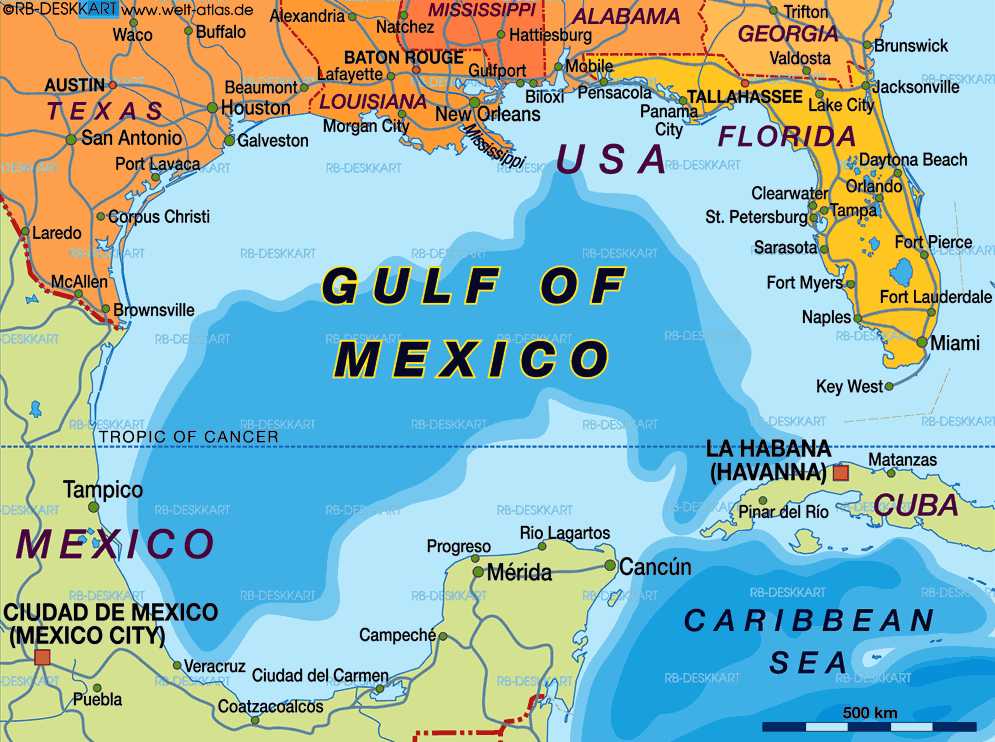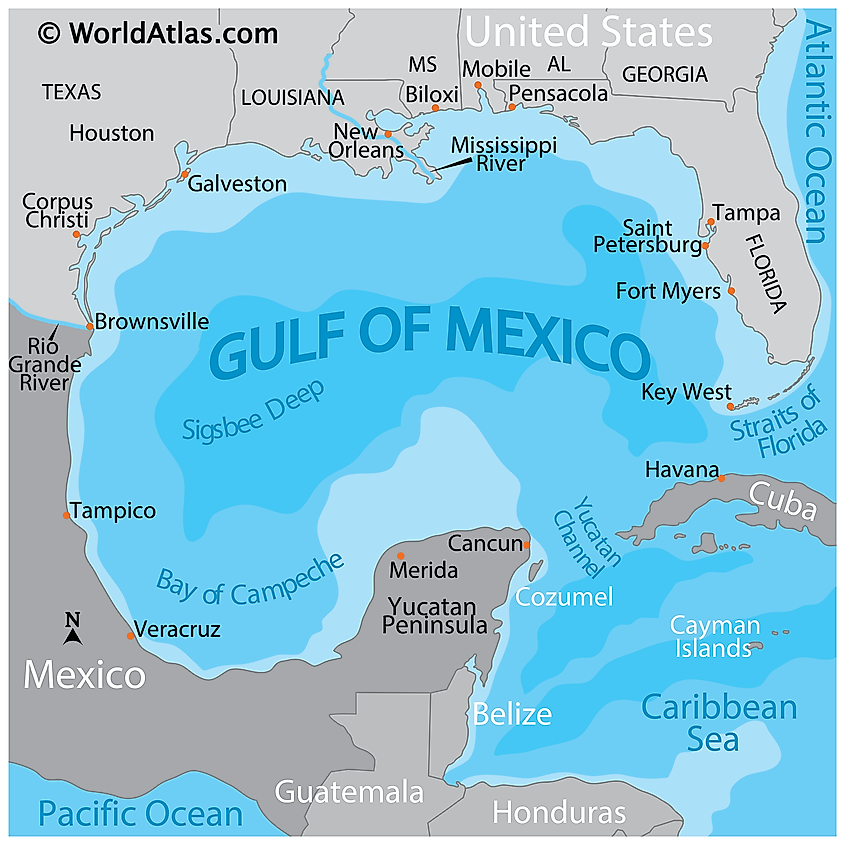Gulf Of Mexico: Name Change & Controversy Explained | [Analysis]
Has a body of water, a vital artery of the North American continent, been arbitrarily renamed, sparking both nationalistic fervor and global confusion? The answer, as of early 2025, is a resounding yes, and the ripples of this decision continue to spread across the landscape of geography, politics, and international relations.
The story of the Gulf of Mexico, or perhaps, the burgeoning Gulf of America, is a tale woven from threads of history, environmental complexities, economic imperatives, and, of course, the ever-present influence of political power. For centuries, this significant body of water, a marginal sea of the Atlantic Ocean, has graced maps under the familiar moniker of the Gulf of Mexico. Bordering the United States, Mexico, and Cuba, it has served as a critical hub for commerce, a rich source of biodiversity, and a stage for both cooperation and conflict.
The Gulf of Mexico, a dynamic ecosystem, is also a place where environmental concerns and economic interests constantly intersect. It is a marine ecosystem that has adjusted to many drivers and pressures, the full extent of which we are only beginning to understand. Its location, currents, hurricanes, marine life, and economic activities are all intricately intertwined, contributing to its unique character.
| Aspect | Details |
|---|---|
| Original Name | Gulf of Mexico |
| Current Alternate Name (U.S. usage) | Gulf of America |
| Surrounding Countries | United States, Mexico, Cuba |
| Area | Approximately 940,000 square miles (2,400,000 sq km); 600,000 sq mi (1,550,000 sq km) |
| Maximum Depth | 17,070 ft (Mexico Basin) |
| Coastline Length (Mexico) | 2,046 miles (for states: Tamaulipas, Veracruz, Tabasco, Campeche, Yucatn) |
| Connections | Connected to the Atlantic Ocean via the Straits of Florida and the Caribbean Sea via the Yucatn Channel. |
| Executive Order | President Donald Trump signed Executive Order 14172 (January 20, 2025) |
| Federal Agency Impact | Affects U.S. federal agencies involved in mapping and geographic nomenclature. |
| Global Impact | Impacts on international usage, including mapping apps and news organizations. |
The genesis of this controversial renaming dates back to January 20, 2025. On that day, President Donald Trump, in a move that underscored his penchant for dramatic gestures, signed Executive Order 14172. This directive instructed the U.S. Interior Secretary to formally change the Gulf of Mexico's name to the Gulf of America on all federal documents. The stated rationale was to recognize the geographical significance of the body of water to the United States.
The immediate impact of this executive order was felt across a range of sectors. Federal agencies responsible for mapping, data collection, and geographic information systems (GIS) were required to adjust their nomenclature. Companies like Google were among the first to respond, updating their map services to reflect the new designation. Other tech giants, including Apple Maps, followed suit, reflecting the widespread implications of the change.
This shift, however, was not met with universal acceptance. The executive order drew a mixed reception, ranging from amusement to consternation. While some saw it as a bold statement of national pride, others viewed it as an arbitrary alteration of a well-established geographic term. The international implications were also immediately apparent. Mexico, and other countries, did not recognize the change. Consequently, the body of water continues to be known as the Gulf of Mexico in those countries and in many international applications.
- Deirdre Imus Remarried A New Chapter In Her Life
- The Latest On Nathaniel Potvins Age What You Need To Know
The Gulf of Mexico's history is as complex as its current nomenclature. It has appeared on maps for centuries. Over time, this critical waterway has been known by many names, reflecting the shifting tides of exploration, colonization, indigenous presence, and political maneuvering. Its shores have witnessed the rise and fall of empires, the movement of vast quantities of goods, and the ebb and flow of human migration.
The geographic scope of the Gulf of Mexico is impressive. The Gulf is bordered by five states of the United States (on the northern and eastern borders), five Mexican states (on its western and southern border), and Cuba to the southeast. The shoreline along the Gulf spans thousands of miles and supports diverse ecosystems and human activities.
The controversy also highlighted the importance of geographic names and their role in shaping our understanding of the world. The name of the Gulf of Mexico has been in use since at least the late 1600s. The decision to alter this well-established term has raised questions about the power of political actors to redefine the landscape and the implications of such actions on global communication and cultural identity.
The ecological and economic significance of the Gulf of Mexico is undeniable. It is a major body of water that makes up a significant portion of the coastline of the southern seaboard of the United States. The region supports vibrant fishing industries, oil and gas exploration, and a rich diversity of marine life. It is a place where the environment and the economy both coexist and contend, highlighting the complex relationship between human activity and the natural world.
The environmental concerns surrounding the Gulf of Mexico are also significant. Hurricanes, oil spills, and the effects of climate change pose ongoing threats to the ecosystem. These challenges underscore the need for responsible stewardship and international cooperation to protect this vital resource.
The decision to rename the Gulf has, predictably, prompted a legal reaction. A Florida state senator has filed a bill to update all Gulf of Mexico references in state law, acknowledging the shift in federal terminology. Yet, the legal and logistical hurdles of a name change on such a scale are formidable. The Associated Press, a global news organization, has stated that it will continue to use the name "Gulf of Mexico" because it remains the established term globally. This reflects the challenge of imposing a unilateral change on an international body of water.
The controversy also extends to the realm of technology. The reliance on mapping apps and digital services in modern life means that changes to geographic names can have far-reaching consequences. The transition from "Gulf of Mexico" to "Gulf of America" in these digital spaces has been gradual and not without confusion. This change emphasizes the power of tech companies to shape public perception and the speed at which information can spread in the digital age.
The story of the Gulf of America remains an unfolding narrative, a test of how politics, history, and technology intersect to shape our world. The future will determine the lasting impact of this name change and whether the world will adopt the new designation.
The environmental significance of the Gulf of Mexico cannot be overstated. It serves as a crucial habitat for diverse marine life, including various species of fish, marine mammals, and seabirds. The region is also a breeding ground for many species, making it a vital component of the larger marine ecosystem.
The name change has brought several implications. The federal government has been required to update its maps. Furthermore, global news organizations, such as the Associated Press, are making use of the original name, signifying its global significance.
The saga of the Gulf of America serves as a reminder of the dynamic nature of geography and the power of human influence in shaping it. It is a tale of contested identity, environmental concerns, and the complex interplay of political, economic, and social forces. This is not just a story about a name change; it is a story about the world we live in, and how we choose to define it.



Detail Author:
- Name : Mr. Arvel Heathcote
- Username : dbradtke
- Email : hadley.kling@yahoo.com
- Birthdate : 1983-11-11
- Address : 643 Janelle Place Willmouth, ID 92444-1398
- Phone : 678.898.3518
- Company : Champlin and Sons
- Job : Freight Inspector
- Bio : Eius doloremque voluptatem ad veritatis ipsa. Debitis voluptatum et molestiae natus aut distinctio. Exercitationem dolore modi ut eveniet rerum eius.
Socials
facebook:
- url : https://facebook.com/lucious.murray
- username : lucious.murray
- bio : Ex repellat rerum nesciunt consequuntur. Qui sit ad autem architecto dolor.
- followers : 2742
- following : 2883
tiktok:
- url : https://tiktok.com/@lucious9318
- username : lucious9318
- bio : Quidem nihil incidunt impedit nulla.
- followers : 5821
- following : 1945
instagram:
- url : https://instagram.com/murray2000
- username : murray2000
- bio : Voluptatibus nulla vel placeat a assumenda ut unde. Saepe veniam omnis harum occaecati aut quas.
- followers : 2832
- following : 2499